PROJECTS & TUTORS
Leveraging Complexity Sciences to Analyze Soccer Performance Evolution Over the Last Decade
by Javier M. Buldú, Brennan Klein, and Maddalena Torricelli
The application of complexity sciences to sports, particularly soccer, has become increasingly significant in recent years. Traditional sports analysis often focuses on individual metrics and linear cause-effect relationships. However, sports are inherently complex systems characterized by non-linear interactions, emergent properties, and dynamic adaptability. Recognizing this complexity allows for a more holistic approach to performance analysis, acknowledging that the collective behavior of a team cannot be fully understood by examining individual players in isolation. This shift from reductionist to holistic analysis is essential for capturing the true nature of sports dynamics.
This project aims to apply principles of Complexity Sciences to examine the changes in soccer performance observed over the past decade. To achieve this, we will analyze highly detailed “event” datasets from five major competitions across the last ten years (both men/women top-division leagues from England, Spain, Italy, Germany, USA, spanning over 16,000 individual matches). These datasets include spatio-temporal information about all actions during soccer matches, such as passes, shots, fouls, and tackles. First, we will investigate the evolution of key performance indicators (KPIs) for both players and teams. These KPIs include metrics such as passing success rate, number of shots, expected goals (xG), and others. This analysis will provide a quantitative foundation to understand performance trends. Second, for each team, we will construct pitch-passing networks based on match event data. From these networks, we will extract both structural parameters (e.g., convex hull, proximity to the opponent’s goal, verticality, etc.) and topological parameters (e.g., shortest-path length, clustering coefficient, largest eigenvalue, degree distribution, centrality measures, etc.). By tracking these parameters over the last decade, we aim to uncover patterns and trends in team dynamics and strategies. Next, we will focus on determining which variables have evolved significantly and which have remained stable over the past decade. We hope to assess whether these changes correlate with traditional performance parameters, shedding light on the interplay between tactical innovations and individual/team success. Finally, we will investigate which competitions were the pioneers in adopting new trends or changes in playing styles, tactics, and performance strategies. This will offer insights into the diffusion of innovations across the soccer ecosystem. The ultimate goal of this project is to provide a quantitative understanding of how soccer has evolved over the last decade, revealing critical factors that drive performance and innovation in the sport.
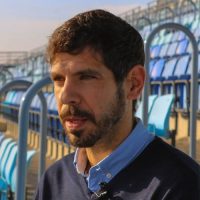
The tutor
Javier M. Buldú is an Electrical Engineer and holds a PhD in Applied Physics from the Polytechnic University of Catalonia. He is a Professor at the Rey Juan Carlos University (URJC) and Coordinator of the Complex Systems Group. He has been a Postdoctoral Researcher at the Center for Astrobiology and a Visiting Researcher at the University of Oxford. In 2011, he founded the Biological Networks Laboratory at the Center for Biomedical Technology (UPM, Pozuelo de Alarcón). He has also been Vice President of ComplejiMad, the Madrid Association of Complexity Sciences. Apart from all these positions, which only give him worries, he dedicates his free time to researching how complex systems behave, from semiconductor lasers to the human brain. He is specialized in Network Science, commonly called Complex Network Theory. Specifically, he participates in the development of new methodologies that allow us to understand how real networks are organized, how they evolve over time and how they interact with each other. In recent years, he has excelled in the analysis of functional brain networks, both in healthy subjects and in individuals who develop some pathology.
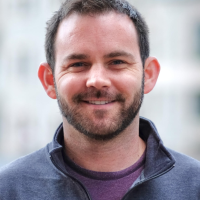
The tutor
Brennan Klein is an Assistant Teaching Professor at the Network Science Institute at Northeastern University in Boston, where he is the director of Complexity & Society Lab. His research program is built around two broad topics: 1) Information, emergence, and inference in complex systems: developing tools and theory for characterizing dynamics, structure, and scale in networks, and 2) Public health and public safety: drawing on complex systems science to document—and fight against—emergent or systemic disparities in society, especially as they relate to public health and public safety.
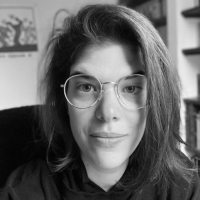
The tutor
Maddalena Torricelli is a postdoctoral researcher at Northeastern University specializing in sports analytics. With a background in complex systems physics and computational social sciences, and holding a PhD in Data Science, her research encompasses temporal networks, dynamic process modeling, and the study of polarization and misinformation in the context of climate change and natural disasters.
Temporal dynamics of ecological interaction networks and their implications for stability
by Violeta Calleja

The tutor
Violeta Calleja is a physicist by training but ecologist by heart postdoctoral researcher, currently at Doñana Biological Station (CSIC), in Spain. Her research is focused on how the structure of ecological interactions maintains coexistence. To achieve this, she combines data from field observations and experiments with theoretical tools and modeling. I take inspiration from ecology to work in complex adaptive systems more generally, and in addition to my work on theoretical ecology, I also study online social networks.
Decoding the Language of Influence: Complexity and Engagement in Social Media
by Niccolò Di Marco and Alessandro Galeazzi
The rapid expansion of social media platforms has revolutionized how we connect and communicate, fundamentally altering the landscape of human interactions. While they offer unprecedented opportunities for connectivity and interaction, they also intertwine entertainment-driven business models with complex social dynamics. Consequently, their impact on public discourse and individual behavior has become a central focus of the scientific community. A crucial aspect for understanding these evolving social dynamics lies in analyzing the linguistic features of generated content, with particular emphasis on vocabulary and lexical choices. While previous studies have primarily focused on users’ comments, this project aims to assess the linguistic complexity of posts created by politicians, activists, and influencers on social media, with an emphasis on their ideological and demographic characteristics. To achieve this goal, we will preprocess the textual content and employ various quantitative measures of textual complexity alongside sentiment analysis techniques. Additionally, we will explore the engagement dimension, investigating the relationship between linguistic properties and audience engagement. The project’s results will reveal whether the political bias or factuality of a source is linked to the linguistic complexity of its posts and whether this complexity influences audience engagement. To conduct this research, data from several social media platforms and information on source reliability and political bias will be given by the tutor.
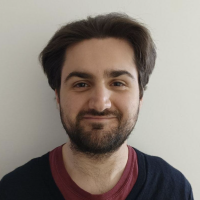
The tutor
Niccolò Di Marco is a Postdoctoral Researcher at Sapienza University of Rome, working at the Center of Data Science and Complexity for Society (CDCS). His research interests span graph theory, complex systems and their applications in social sciences and information dissemination. He has published in renowned multidisciplinary scientific journals, including Nature and PNAS, and has presented his findings at various international conferences.
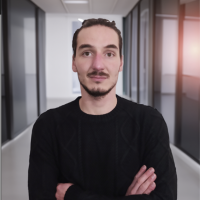
The tutor
Alessandro is currently Assistant Professor at the University of Padova in Italy. He completed his Ph.D. at the University of Brescia, followed by a Postdoc at Ca’ Foscari University of Venice, on topics related to complex systems, social networks, the formation of echo chambers on social media.
Network-based approaches for observational health data to improve patient wellbeing
by Elma Hot Dervic and Katharina Ledebur
The accelerated aging of global populations poses unprecedented challenges for the healthcare system. Today’s reality of a 100-year lifespan brings a shifting multimorbidity burden and higher healthcare and long-term care expenses. The recent vast accumulation of patient health data on diagnoses, medications, and clinical parameters in electronic health records (EHR), clinical registries, and other observational healthcare data has accelerated the investigation of patient health beyond the study of single diseases considered in isolation. Network science has been established in medical research to study various networks that determine health. Many recent works demonstrated that network science provides insights into health-related problems and helps us to create better interventions and treatments. This tutorial uses a population-wide dataset containing 44 million records of almost all inpatient stays from 2003 to 2014 in Austria with the aim of uncovering complex properties of multimorbidities using complexity science methods. Potential research questions we could tackle using the mentioned dataset are: – What are the most critical predictors of disease progression in elderly populations? – Node Embbeding techniques – Minimal Life2Vec – for mortality prediction – Temporal Network Analysis of comorbidity networks – predicting future comorbidity links – Analysis of Healthcare System Utilization Patterns – Exploring the dynamics of rare diseases through the construction and analysis of rare disease networks

The tutor
Elma Hot Dervic is a postdoctoral fellow at the Complexity Science Hub and the Medical University of Vienna. She completed her PhD at CSH and the Medical University of Vienna in January 2023. Elma holds a bachelor’s and a master’s degree in electrical engineering from the University of Montenegro, which she earned in 2015 and 2017, respectively. Before joining CSH, Elma was a junior researcher at the First Center of Excellence (BIO-ICT) at the University of Montenegro. Elma is a co-founder of BeeAnd.me, a venture-funded IoT startup that uses technology to help beekeepers and bees through data science. She is known as a 3-time “share positive impact” TEDx speaker. Elma’s research interests include machine learning, network science, and everything impactful related to data science.Currently, she is working with medical data on unraveling disease trajectories. Furthermore, she is working on trading data to analyze systemic risk in supply chains.
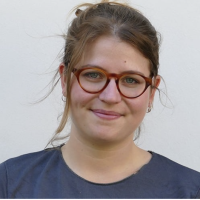
The tutor
Katharina Ledebur completed her PhD at the Complexity Science Hub and the Medical University of Vienna under the supervision of Peter Klimek and is now a postdoc at CSH. She holds a B.Sc. and M.Sc. in Biophysics from the Humboldt University of Berlin. Her research explores the intersection of epidemiology, complex systems and data science, focusing on the dynamics of health systems, comorbidity networks and the impact of environmental and societal factors on health outcomes.
Pillars of Faith: Exploring five centuries of leadership in the Roman Catholic Church
by Michele Re Fiorentin, Alberto Antonioni and Eugenio Valdano
The Catholic Church, with a history spanning over two millennia, has developed a complex hierarchical structure to govern its global congregation. At the core of this hierarchy is the bishop, entrusted with the spiritual and administrative oversight of a diocese, a community of the faithful within a defined geographical region. Three bishops consecrate a new bishop, creating an interlaced, unbroken succession throughout the centuries.
Within the ecclesiastical hierarchy, some bishops are elevated to higher offices, such as cardinals and nuncios, who play significant roles in advising the Pope, electing his successor, and representing the Church in diplomatic matters.
We propose an in-depth exploration of the Catholic Church’s intricate hierarchy, analyzing five centuries of history through the lens of machine learning. Using a novel dataset that documents over 20.000 bishops and their relations, 3.000 cardinals, and more than 50.000 dioceses worldwide, this project aims to uncover the patterns that have shaped the leading roles within the Church and the progression in the careers of bishops. By this unprecedented study, we seek to shed new light on the interplay between history, influence, and the evolution of power within one of the most enduring institutions.

The tutor
Michele Re Fiorentin graduated in physics at the University of Torino (Italy) and got his Ph.D. in theoretical physics from the University of Southampton, UK. He previously worked as a researcher at the Italian Institute of Technology and has been Assistant Professor at the Politecnico di Torino since 2022. His research primarily focuses on first-principles simulations of materials for environmentally friendly applications, on the investigation of the optoelectronic properties of low-dimensional materials. and on the application of machine learning to physical-chemistry problems. He also collaborates on research related to complex systems and epidemic spreading.

The tutor
Alberto is an associate professor affiliated with the Interdisciplinary Group of Complex Systems (GISC) in the Department of Mathematics at Carlos III University of Madrid (UC3M). He holds two PhD degrees: one in Information Systems from the University of Lausanne, Switzerland, and another in Mathematical Engineering from UC3M. He worked as a postdoctoral research fellow at the Institute for Biocomputation and Physics of Complex Systems, Spain, and at the Department of Economics at University College London, UK. His research interests include the foundations of complex systems, evolutionary game theory, and experimental economics. To date, he has contributed more than 40 publications to journals such as Ecological Economics, eLife, Physical Review Letters, and Nature Communications.
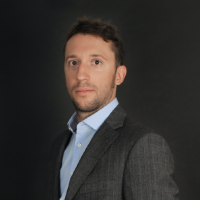
The tutor
Eugenio is a tenured researcher at the French National Institute of Health and Medical Research (INSERM). He is part of the Pierre Louis Institute of Epidemiology and Public Health (IPLESP), attached to INSERM and the Faculty of Health of Sorbonne Université, in Paris, France.
Eugenio is an infectious disease epidemiologist with a background in theoretical physics. He develops data-rich mathematical models to study how infectious disease spread in populations. Patterns of human mobility and mixing influence the likelihood of epidemic outbreaks, drive their evolution, and determine the condition for disease containment and elimination. Eugenio design theoretical models to combine data on human behavior and epidemiological data to understand epidemics, make scenarios, help guide public health interventions. Website: www.evmodelers.org
Detection of Attractors and Repellents in Wildlife Movement for Epidemiological Modelling
by Kamil Smolak and Olena Hołubowska
Wildlife movement plays a critical role in the dynamics of zoonotic disease transmission, especially in species like wild boars, which are key vectors for diseases such as African Swine Fever. Understanding how environmental factors such as attractors (e.g., water sources, feeding grounds) and repellents (e.g., roads, urban areas) shape their movement is essential for improving epidemiological models and designing effective intervention strategies. This project aims to develop methods for detecting attractors and repellents from GPS movement data, integrating spatial analysis with statistical and machine learning methods. Using high-resolution individual movement data of wild animals (European wild boar) and mobility analysis methods, we will key environmental influences on wild boar trajectories. During the 72 hours of work, teams will focus on creating a prototype tool to preprocess data, detect attractor and repellent zones, and visualize results. The tool will be evaluated against the manually labelled dataset. The outcome will bridge movement ecology, methods from human mobility analysis and epidemiology, offering novel tools for wildlife management and disease spread mitigation.
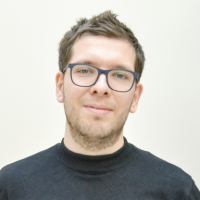
The tutor
Kamil Smolak is an Assistant Professor at the Wrocław University of Environmental and Life Sciences, Poland. His research is on the verge of computer science, geography and GIScience. He specialises in human mobility modelling and bias mitigation. He delivered one of the early libraries HuMobi dedicated to human mobility data processing and human mobility modelling. For his achievements, he has been awarded prestigious awards, including the START 2022 Polish Science Foundation Scholarship for the most talented young scientists.

The tutor
Olena Hołubowska is a researcher at KU Leuven in Belgium, specializing in analyzing human mobility patterns through data collected from mobile applications. Her current research focuses on the variation in intra-urban mobility among residents with migratory backgrounds. She holds a strong background in mathematical modeling, developed during her studies at DTU (Technical University of Denmark).
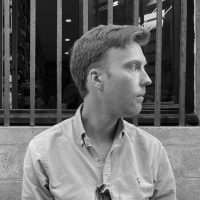
The tutor
Andrew Renninger is a PhD candidate at the Centre for Advanced Spatial Analysis at University College London, where his research explores urban mobility patterns, shocks, and their economic consequences. His work combines methods from econometrics, network science, complexity science, and machine learning to understand how the urban environment shapes human movement and economic opportunity. Prior to his PhD, Andrew was a researcher and fellow at the University of Pennsylvania.
Walking Through Complex Spatial Patterns of Socioeconomic Systems
by Sandro Sousa
Spatial heterogeneity is fundamental in shaping complex systems, from socioeconomic segregation in cities to cell-type distributions in biological tissues. Traditional measures of spatial patterns often struggle with scale dependency, and boundary effects, or rely on arbitrary parameters, making it challenging to compare different systems. This project will expand a framework based on random walks on graphs to analyse spatial patterns across various socioeconomic contexts. By examining the statistics of random walk trajectories, we can quantify spatial complexity in a non-parametric and mathematically principled way. The framework has already proven successful in studying ethnic segregation in metropolitan areas and has been used to analyse COVID-19 incidence patterns and tumour cell distributions. The project allows various possible directions including studying multiple variables simultaneously to exploring different network topologies or investigating new applications such as migration patterns. Team members are also encouraged to propose bold and unconventional applications. The modular nature of the framework allows for rapid prototyping and testing of new ideas.
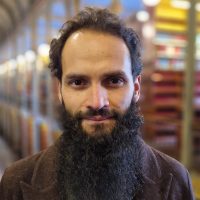
The tutor
Sandro is a Complexity & Network Scientist focusing on sociospatial complexity, population dynamics, and socioeconomic inequalities. He is affiliated with the Copenhagen Center for Social Data Science (SODAS) at the University of Copenhagen and the Networks, Data, and Society (NERDS) group at the IT University of Copenhagen. His work focuses on societal issues emerging from population dynamics, particularly among vulnerable groups, drawing methods from complexity, networks, data science, web scraping, spatial analysis, and randomised trials. He has studied urban transportation, ethnic segregation, spatial complexity, unequal epidemic incidence, and inequalities in science. He holds a PhD in Mathematical Sciences and MSc in complex systems modelling.
